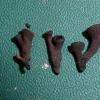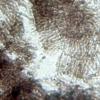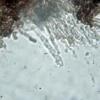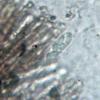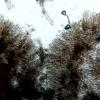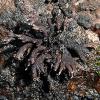
20-12-2025 15:47
Mirek GrycHi.These grew on pine wood that was heavily covere

18-12-2025 21:17
Pol DebaenstThe identification took me to Byssonectria deformi

15-12-2025 07:09
 Danny Newman
Danny Newman
indet. Rutstroemiaceae sp. on unk. fallen leavesMc

19-12-2025 10:10
Patrice TANCHAUDBonjour, récolte réalisée en milieu dunaire, a

18-12-2025 17:23
 Bruno Coué
Bruno Coué
Bonjour,je serais heureux d'avoir votre avis sur c

18-12-2025 18:07
Margot en Geert VullingsThese plumes were found on rotten wood.They strong

17-12-2025 18:35
 Michel Hairaud
Michel Hairaud
Bonjour à tous/Hi to everyone I am passing along

15-12-2025 15:48
 Danny Newman
Danny Newman
Melanospora cf. lagenaria on old, rotting, fallen
I recently found this fungus on a dead trunk, has black apothecia trumpet shaped, sometimes branched, I not observed ascospores, asci only immature, but its particular characteristics is possible that some of you will recognize.

What you could try is a median section of perhaps 50-100 µm thickness with a razor blade, to look what kind of hairs there are on the stipe and what excipular cells on the flanks. You should do that in water, and after making some photos, add KOH and view whether a brown sap extrudes into the medium (ionomidotic reaction). Maybe th excipular stricture is now better visible.
Are the asci about as long as the paraphyses? Then you can test with IKI (I assume they are inamyloid). The paraphyses are very banal, cylindrical-obtuse?
Zotto

Now, Dick Korf wrote this to me:
"Somehow I am no longer able to enter comments in Ascofrance. The recent trumpet-like asco is surely a species of Unguiculariopsis. I've contacted them to find out why. The paper to consult is Zhuang, W.-y. (1988). A monograph of the genus Unguiculariopsis (Leotiaceae, Encoeliodeae). Mycotaxon 32(1): 1-83. They should look for the typical hooked hairs on the excipulum. You can suggest this on AF in the meanwhile."
This is a good idea to look for hairs at margin and flanks. I was not aware of Unguiculariopsis with such long stipes, though that genus was placed in the Encoelioideae, an opinion that was merely based on morphology.I am unaware of any molecular? data on Ungioculariopsi, I rather would place it in the vicinity of Hyaloscypha. So the future will be thrilling.
Though immature it could be interesting to investigate this specimen by molecular methods. I will ask Kadri if she has interest to do that.
Zotto

Zotto

Kadri showed great interest to study your specimen and to take a sequence.
Below is her address. I hope you can manage to send her a portion.
Thank you very much!
Zotto
Kadri Pärtel,
CuratorMycological Herbarium TAAM
Institute of Agricultural and Environmental Sciences
Estonian University of Life Sciences
181 Riia Street
51014 Tartu
Estonia
?

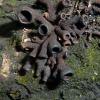

 P1150322-0001.JPG
P1150322-0001.JPG